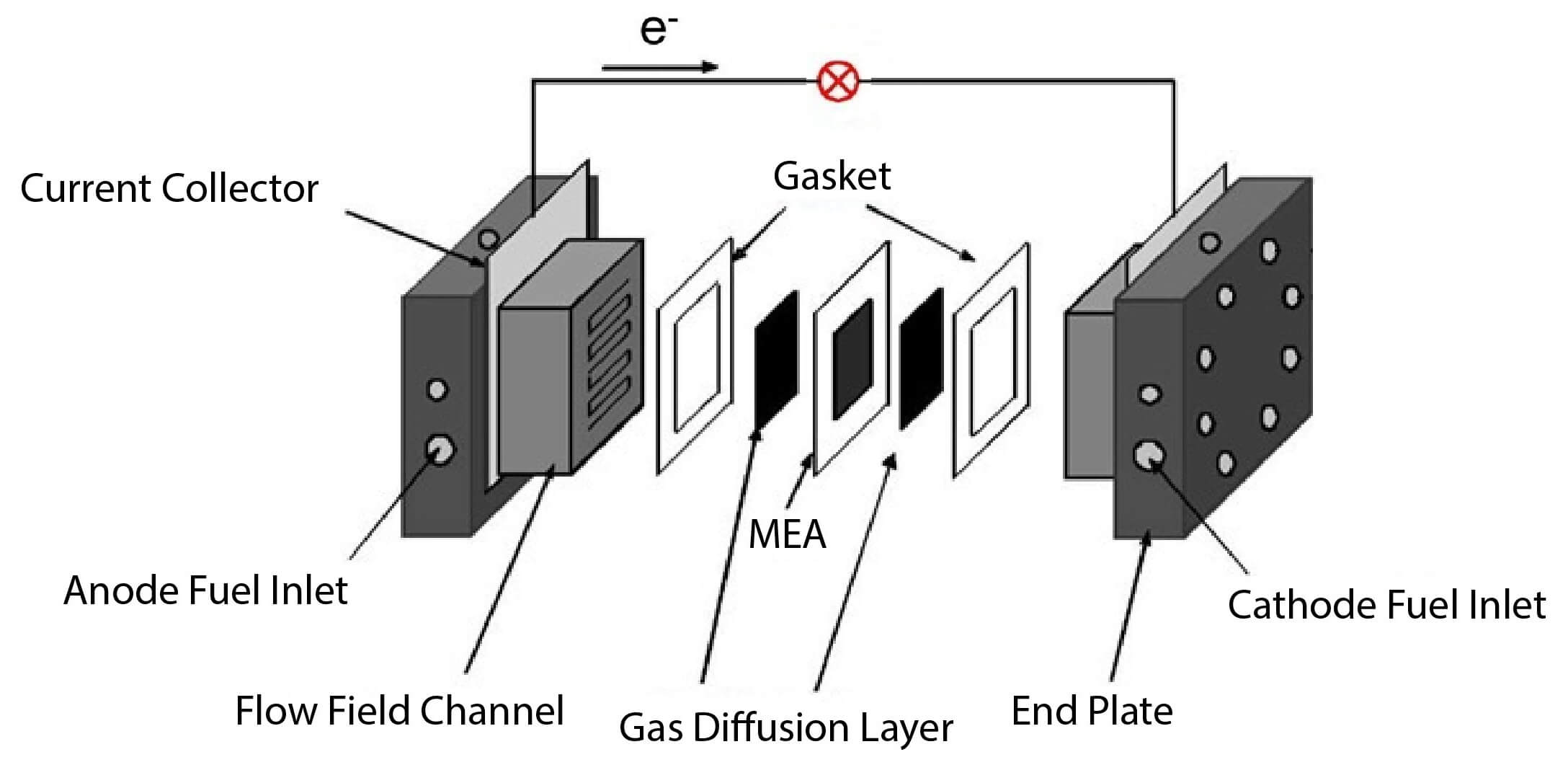A fuel like H₂ and oxidants like O₂ into direct current DC. This is an online quiz called Identifying Parts of the Cell.
They produce electricity and heat as long as fuel is supplied.

. Your Skills Rank. Components of Fuel cell are Hydrogen and Oxygengases. We review here the current status of solid oxide SOFC and polymer electrolyte membrane PEMFC fuel cells.
Fuel Cell System Components and Manufacturing Processes The PEM fuel cell powerplant is built from four main subsystems. 1 the cell stack 2 the balance-of-plant 3 power conditioning and 4 system controls. Hydrogen storage is considered separately from the powerplant and for the purposes of this document.
There is a printable worksheet available for download here so you can take the quiz with pen and paper. A typical PEM fuel cell consists of bipolar plates a catalyst electrodes and the polymer membrane. In the simplest example a fuel such as hydrogen is brought into the anode compartment and an.
It is really no different than the heart veins and kidneys of your body working together to keep you moving. Identify the components of a fuel cell. The main components of a PEMFC MEA are.
Identify the components of a fuel cell. The primary components of a fuel cell are an ion conducting electrolyte a cathode and an anode as shown schematically in Fig. Identify the components of a fuel cell.
BUT a single hydrogen fuel cell only produces 07 volts so many fuel cells must be combined to from a FUEL CELL STACK. Despite having eco-friendly applications in transportation PEMFCs can also be used for the stationary and portable generation of power. You need to get 100 to score the 14 points available.
A Hydrogen-oxygen B nickel-cadmium C zinc-manganese D lithium ion E nickel-metal hydride. Manufacturing of PEM fuel cells. Zinc-manganese hydrogen-oxygen nickel-metal hydride lithium ion nickel-cadmium.
How Fuel Cells Work. Fuel cells are quiet during operation as they have few moving parts. I Proton conducting membranes ii electro-catalysts anode and cathode iii porous.
The CCM book includes membrane CL ink and CCM as a whole Gasketsub-gasket was included to make a full spectrum of fuel cell components. Identify the components of a fuel cell. Kinetics and transport properties influence cell performance.
Fuel cell vehicles are being developed which use fuel cell technology rather than petrol or diesel engines. Fuel cells are electrochemical devices which converts chemicals ie. Main components of the compendium 5 Main components include BP GDL CCM and gasket.
Fundamentals of fuel cell catalysis are explained concurrent reaction pathways of the methanol oxidation reaction are discussed and a variety of catalysts for. Such solid electrolyte systems obviate the need to contain corrosive liquids and are thus preferred by many developers over alkali. Identify the components of a fuel cellA Hydrogen-oxygenB nickel-cadmiumC zinc-manganeseD lithium ionE nickel-metal hydride.
A fuel cell consists of two electrodesa negative electrode or anode and a positive electrode or cathode. Together these three are often referred to as the membrane-electrode assembly MEA or simply a single-cell fuel cell. One of the most critical fuel cell components is the catalyst layer where electrochemical reduction and oxidation of the reactants and fuels take place.
Therefore the assembly of the electrode and the membrane with optimum three-phase reaction structure termed as the membrane electrode assembly MEA is crucial for the success of this technology and is rightly called the core of the fuel cell. The primary components of a fuel cell are an ion conducting electrolyte a cathode and an anode as shown schematically in Fig. Together these three are often referred to as the membrane-electrode assembly MEA or simply a single-cell fuel cell.
If just one of these components were to malfunction it could interfere with the entire fuel transferring process. Fuel cells work like batteries but they do not run down or need recharging. Fuel cells offer the possibility of zero-emissions electricity generation and increased energy security.
A nickel-metal hydride b hydrogen-oxygen c lithium ion d zinc-manganese e nickel-cadmium. There is a fuel pump fuel tank fuel lines fuel filter fuel injectors and carburetor.

The 4 Components Of A Pem Fuel Cell Fuel Cell Electric Buses



0 Comments